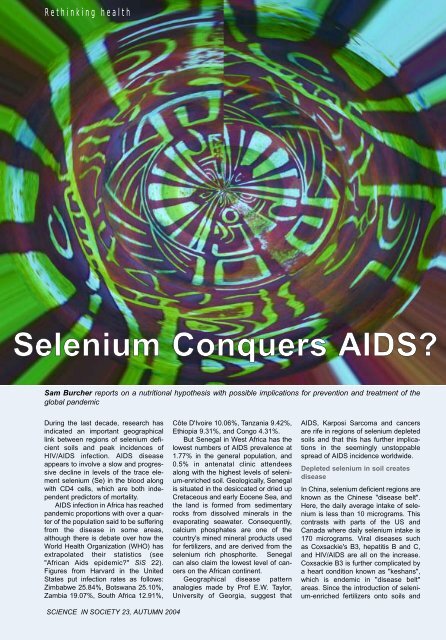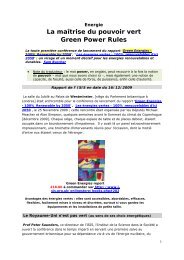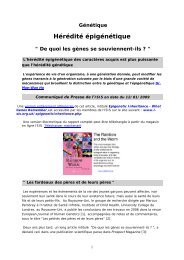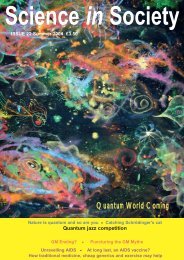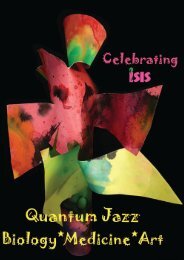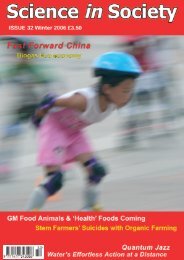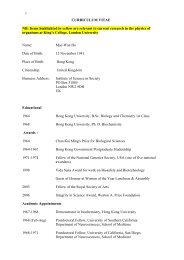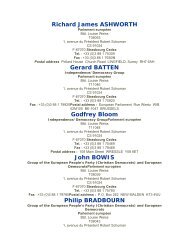Ethiopia goes organic to feed herself - The Institute of Science In ...
Ethiopia goes organic to feed herself - The Institute of Science In ...
Ethiopia goes organic to feed herself - The Institute of Science In ...
You also want an ePaper? Increase the reach of your titles
YUMPU automatically turns print PDFs into web optimized ePapers that Google loves.
Rethinking health<br />
Selenium Conquers AIDS?<br />
Sam Burcher reports on a nutritional hypothesis with possible implications for prevention and treatment <strong>of</strong> the<br />
global pandemic<br />
During the last decade, research has<br />
indicated an important geographical<br />
link between regions <strong>of</strong> selenium deficient<br />
soils and peak incidences <strong>of</strong><br />
HIV/AIDS infection. AIDS disease<br />
appears <strong>to</strong> involve a slow and progressive<br />
decline in levels <strong>of</strong> the trace element<br />
selenium (Se) in the blood along<br />
with CD4 cells, which are both independent<br />
predic<strong>to</strong>rs <strong>of</strong> mortality.<br />
AIDS infection in Africa has reached<br />
pandemic proportions with over a quarter<br />
<strong>of</strong> the population said <strong>to</strong> be suffering<br />
from the disease in some areas,<br />
although there is debate over how the<br />
World Health Organization (WHO) has<br />
extrapolated their statistics (see<br />
"African Aids epidemic?" SiS 22).<br />
Figures from Harvard in the United<br />
States put infection rates as follows:<br />
Zimbabwe 25.84%, Botswana 25.10%,<br />
Zambia 19.07%, South Africa 12.91%,<br />
Côte D'Ivoire 10.06%, Tanzania 9.42%,<br />
<strong>Ethiopia</strong> 9.31%, and Congo 4.31%.<br />
But Senegal in West Africa has the<br />
lowest numbers <strong>of</strong> AIDS prevalence at<br />
1.77% in the general population, and<br />
0.5% in antenatal clinic attendees<br />
along with the highest levels <strong>of</strong> selenium-enriched<br />
soil. Geologically, Senegal<br />
is situated in the desiccated or dried up<br />
Cretaceous and early Eocene Sea, and<br />
the land is formed from sedimentary<br />
rocks from dissolved minerals in the<br />
evaporating seawater. Consequently,<br />
calcium phosphates are one <strong>of</strong> the<br />
country's mined mineral products used<br />
for fertilizers, and are derived from the<br />
selenium rich phosphorite. Senegal<br />
can also claim the lowest level <strong>of</strong> cancers<br />
on the African continent.<br />
Geographical disease pattern<br />
analogies made by Pr<strong>of</strong> E.W. Taylor,<br />
University <strong>of</strong> Georgia, suggest that<br />
AIDS, Karposi Sarcoma and cancers<br />
are rife in regions <strong>of</strong> selenium depleted<br />
soils and that this has further implications<br />
in the seemingly uns<strong>to</strong>ppable<br />
spread <strong>of</strong> AIDS incidence worldwide.<br />
Depleted selenium in soil creates<br />
disease<br />
<strong>In</strong> China, selenium deficient regions are<br />
known as the Chinese "disease belt".<br />
Here, the daily average intake <strong>of</strong> selenium<br />
is less than 10 micrograms. This<br />
contrasts with parts <strong>of</strong> the US and<br />
Canada where daily selenium intake is<br />
170 micrograms. Viral diseases such<br />
as Coxsackie's B3, hepatitis B and C,<br />
and HIV/AIDS are all on the increase.<br />
Coxsackie B3 is further complicated by<br />
a heart condition known as "keshans",<br />
which is endemic in "disease belt"<br />
areas. Since the introduction <strong>of</strong> selenium-enriched<br />
fertilizers on<strong>to</strong> soils and<br />
SCIENCE IN SOCIETY 23, AUTUMN 2004


